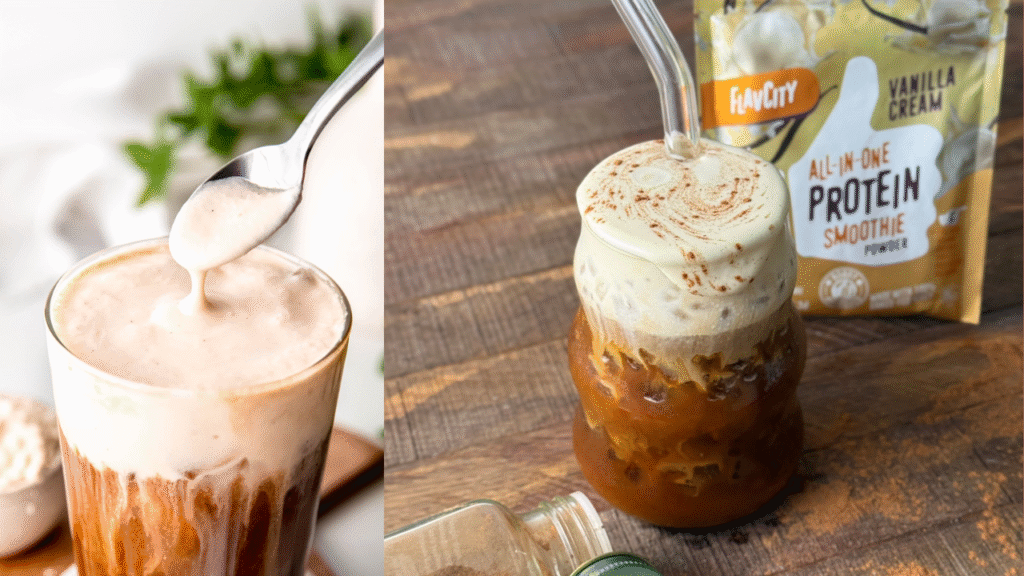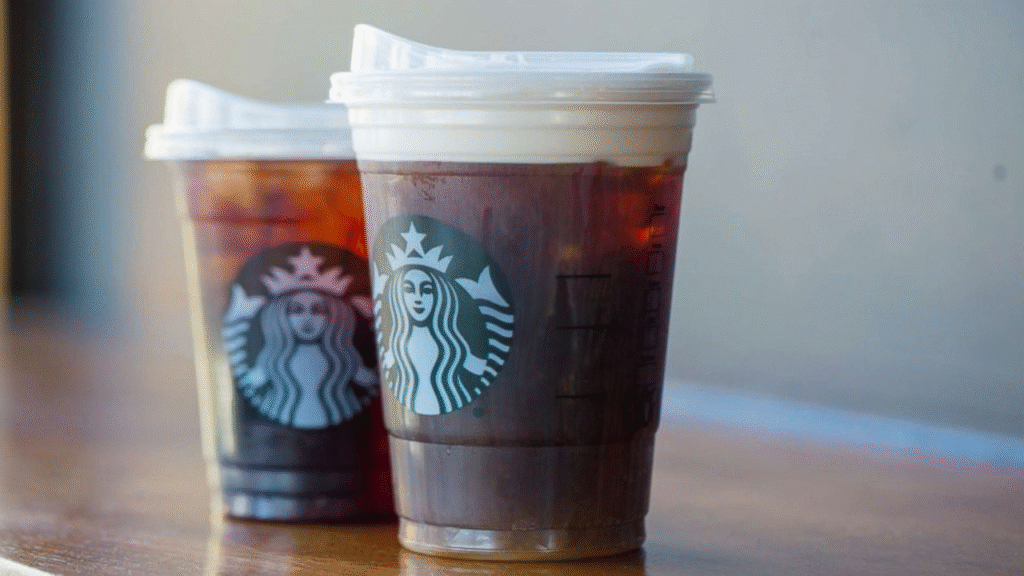Coffee has always been a part of our daily routine, but now Starbucks has taken it a step further. With the release of Starbucks protein coffee, the brand has tapped into one of the fastest-growing wellness trends—combining the love of coffee with the benefits of protein. This innovation has created a new buzz among health enthusiasts, gym-goers, and everyday coffee drinkers.
In this review, we will explore what Starbucks protein coffee is, how it works, its nutritional value, flavors, and whether it’s worth adding to your daily lifestyle.

What is Starbucks Protein Coffee?
Starbucks protein coffee is a line of drinks designed to provide both caffeine and protein in one cup. Instead of just a typical latte or cold brew, these beverages contain added protein powder or protein-infused cold foam. Depending on the drink size and type, each serving offers between 15 to 36 grams of protein.
The goal is simple: fuel your body with energy while supporting muscle recovery and overall nutrition. For customers who want more than just a caffeine boost, this is a smart option.
Why Starbucks Introduced Protein Coffee
The popularity of high-protein diets has grown significantly in the past decade. From weightlifters to busy professionals, people now see protein as essential to staying energized and feeling full. At the same time, “proffee”—the combination of protein powder and coffee—has been trending across TikTok and Instagram.
By launching Starbucks protein coffee, the brand has responded to consumer demand. Instead of making proffee at home, customers can now grab a convenient, ready-made option at their local Starbucks.
Nutritional Breakdown of Starbucks Protein Coffee
The exact nutritional content depends on which drink you order, but here’s an overview:
- Protein Lattes – These drinks combine milk, espresso, and added protein, providing up to 26g of protein.
- Iced Protein Matcha or Cold Brew – Lighter options with 15–20g of protein.
- Protein Cold Foam – Adds around 12–15g of protein as a topping, transforming regular cold brews into a protein-rich drink.
Calories vary, but most protein coffees range between 180–320 per Grande size. Compared to regular sugary drinks, this is a better nutritional deal for those who prioritize protein intake.

Flavor Options Available
Starbucks didn’t stop at just one version of protein coffee. They introduced several flavors to appeal to a wide audience:
- Vanilla Cream Protein Latte – Smooth, classic, and lightly sweet.
- Iced Banana Cream Protein Matcha – A unique mix of matcha and banana flavor, with a creamy finish.
- Chocolate Cream Protein Cold Brew – A dessert-like option that blends chocolate notes with coffee.
The variety makes it easy to find a drink that fits your taste preferences while still delivering protein.
Starbucks Protein Coffee vs. Regular Starbucks Drinks
The biggest difference is the protein content. A standard Starbucks latte has about 8–12g of protein from milk. In contrast, protein lattes double or triple that amount.
Another difference is satiety. Customers report that protein coffee keeps them full longer, making it a good option for breakfast or as a post-workout recovery drink.

Real-Life Case Study: Sarah’s Morning Routine
Sarah, a 29-year-old marketing professional, used to skip breakfast and rely only on a latte to get her through the morning. She often felt hungry by 10 a.m. and reached for snacks.
When she switched to the Starbucks Vanilla Protein Latte, she noticed a major difference. The 26g of protein kept her satisfied until lunch, reduced cravings, and gave her the energy she needed for meetings and deadlines.
Her experience is a good example of how Starbucks protein coffee can change daily routines for busy individuals.
Tips for Ordering Starbucks Protein Coffee
- Customize Sweetness – Ask for fewer pumps of syrup if you want less sugar.
- Try Plant-Based Milk – Almond, oat, or soy milk can change the flavor and nutrition.
- Size Matters – Grande sizes usually provide the best protein-to-calorie ratio.
- Pair with a Balanced Snack – For even more nutrition, add a protein box or egg bites.
These small adjustments can help you get the most out of your Starbucks protein coffee.
Strategies to Incorporate Protein Coffee into Your Diet
- Post-Workout Drink – Replace a protein shake with a protein cold brew for caffeine plus recovery fuel.
- Breakfast Replacement – Choose a protein latte when you don’t have time to cook.
- Afternoon Energy Boost – Instead of sugary snacks, grab a protein coffee to stay full and alert.
- Travel-Friendly Option – On busy days, this is an easy way to get protein without carrying powders or shakers.
Customer Reactions and Market Impact
Early customer reviews have been positive. Fitness enthusiasts love the convenience, while casual drinkers enjoy having a healthier alternative to sugary frappuccinos.
On social media, hashtags like #StarbucksProteinCoffee and #Proffee are gaining millions of views. This viral popularity shows that Starbucks has successfully positioned itself at the intersection of health and lifestyle trends.
Is Starbucks Protein Coffee Worth It?
The answer depends on your goals. If you’re looking for a drink that keeps you full, supports muscle recovery, and gives you caffeine, then yes—it’s worth trying.
However, if you already make protein shakes at home, you may find Starbucks protein coffee more expensive. Still, the convenience and taste make it appealing for many customers.
Frequently Asked Questions
1. What is Starbucks protein coffee made of?
Starbucks protein coffee combines espresso, milk, and added protein powder. Some drinks also include protein cold foam.
2. How much protein is in Starbucks protein coffee?
Depending on the drink, protein ranges from 15 to 36 grams per Grande size.
3. Is Starbucks protein coffee healthy?
Yes, compared to sugary coffee drinks, it offers more protein and can help with satiety. However, calorie and sugar content varies by flavor.
4. Can I get plant-based options?
Yes, Starbucks allows you to substitute almond, soy, or oat milk for most protein drinks.
5. Does Starbucks protein coffee taste good?
Most customers describe it as creamy, smooth, and satisfying. Flavors like vanilla, chocolate, and banana add variety.
Conclusion
Starbucks protein coffee is more than just a new menu item—it’s a lifestyle shift. By combining caffeine with protein, Starbucks has created a drink that fits the needs of modern, health-conscious consumers. Whether you’re an athlete, a busy professional, or someone curious about the protein trend, this line of drinks offers convenience, nutrition, and taste in one cup.
If you’re looking for a satisfying way to start your morning or refuel after the gym, Starbucks protein coffee may be exactly what you need. It’s not just coffee anymore—it’s a new way to fuel your day.





